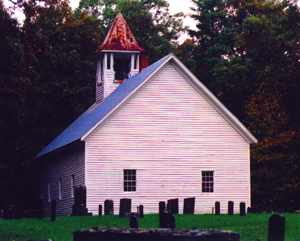
Cades Cove: most visited area in the Smoky Mountains
Bob Jones University alumni may recognize Cades Cove as one of the locations for the Unusual Films production of Sheffey. In the local vernacular, a cove is a relatively flat valley between mountain ridges, and Cades Cove is one of the most beautiful of any in the southern Appalachians. It is certainly the most visited, with more than two million visitors each year. In fact, Cades Cove is the most heavily visited destination in the most heavily visited national park in the United States. According to a recent park brochure, if Cades Cove “were to secede from Great Smoky Mountains National Park, it would still be in the top 10% of national system sites in terms of popularity.”
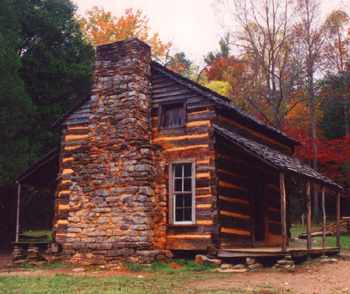
‘Natural’ vistas maintained by man.
After Cove land was acquired (deceitfully and uncharitably) for the Smoky Mountains National Park during the late 1920s and early ‘30s, the government at first thought it would allow the once carefully cultivated fields to revert to wilderness. But the National Park Service quickly realized that the beauty of the Cove was enhanced by the contrast between open fields and surrounding mountains, and it decided to prevent the forests from retaking all the old farmlands. The Park Service has also restored some wetlands and sown some areas in native grasses—all of which makes the Cove an excellent place to view whitetail deer and (less often) black bear and wild turkey.
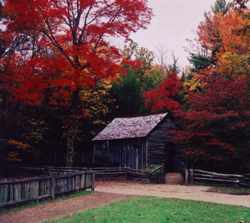
Early settlers
Although Cherokees camped and hunted in the Cove, there is no evidence of Indian settlement. Europeans began moving into the area during the 1820s, and by 1850 the population had grown to more than six hundred. Then, during the Civil War, guerrillas devastated the area. Most Cove residents were Union sympathizers, and they suffered intensely during the four years of conflict. At the end of the war, those who had sided with Confederacy were driven out.
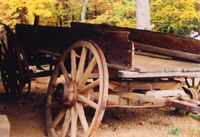
A thriving 19th century community
Although it took decades for the Cove population to regain its pre-war level, a deeper sense of community developed during the latter decades of the nineteenth century. This shared folk culture encouraged outsiders to propagate dubious tales about the idiosyncrasies of “southern highlanders.” In fact, Cove residents were never so isolated as the hillbillies of popular legend. According to historian Durwood Dunn, Cove family life at the turn of the twentieth century was “largely indistinguishable from that of other rural Tennesseans.”† Most Cove residents were well aware of larger affairs on the other side of the mountain, and some sent their children to college there. Surviving church buildings bear testimony to the vibrant spiritual life of the Cove, an emphasis not usually associated with mountaineers of legend. (All the Cove churches vigorously opposed the manufacture and consumption of alcohol—which is not to say that moonshine was unknown among the less respectable members of the community.)
Historic structures
Almost as soon as the government acquired Cove land in the 1930s, it pulled down twentieth-century farm buildings. Older buildings (minus their former residents) were considered picturesque, and many were retained, although some were moved to more accessible locations. Today, Cades Cove contains the finest collection of nineteenth-century structures in the Great Smoky Mountains National Park, including homes, churches, and a gristmill. (Two other fine assemblages of buildings are those at the Oconaluftee Visitor Center and the much-less-visited Cataloochee settlement on the eastern edge of the park.) Nevertheless, some buildings, including the mill, have been heavily restored, and the black smith shop is a reconstruction.
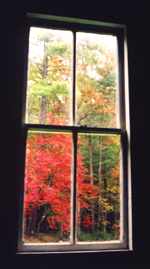
Touring Cades Cove
Park visitors can tour the Cove via an eleven-mile, one-way loop road that includes parking lots and pull-offs. During the summer months and the period of autumn color in October, traffic can be extremely heavy. Even without stops to view the historic buildings or to take a restroom break at the Visitor Center near Cable Mill, the eleven miles may take two hours to drive. Add an errant bear or two, and the resulting snarl can rival anything ever endured in an urban rush hour.
When to visit
Because vacationers tend to sleep late, early mornings are usually a good time to visit the Cove. It is also easier to catch glimpses of birds and animals in the morning. However, on Wednesday and Saturday mornings, motor vehicles are generally barred until 10 AM to accommodate walkers and bikers. Bikes may be rented in the Cove, but of course, you can bring your own. Horses may also be hired from concessionaires.
Hiking in Cades Cove
The most-hiked trail in Cades Cove is the Abrams Falls Trail, a relatively easy five-mile round trip that follows Abrams Creek to a twenty-foot high waterfall. But like the loop road, the Abrams Falls Trail can be a very busy place in summer. An even easier trail with less foot traffic is Cades Cove Nature Trail, a two-mile circle.
Driving directions
The Cades Cove Visitor Center is approximately 18 air miles from Lake Santeetlah—and 62 road miles (via U.S. 129 North and the Foothills Parkway). Driving time is usually a bit over an hour and a half. The return to North Carolina can be considerably shortened by taking the primitive, one-way Parson Branch road eight miles through the forest. (It is, however, closed in winter and sometimes washed out in summer). Although this route is probably best avoided by the timid and by those whose vehicles are very old or very new, the mountain shortcut is an eight-mile experience that includes multiple fords of two streams and some adrenaline-producing climbs and descents.
More to see & hike in the Smokies
Learn more about the Great Smoky Mountains National Park, or see our pages on other sights in the area:
- Charlie’s Bunion: hiking along the ridge of mountains near the center of the park.
- Alum Cave Bluffs & LeConte Lodge: See the towering cliffs of Alum Cave Bluffs on the way to the views from the Smokies’ only “hotel” high atop Mt. LeConte.
† Durwood Dunn, Cades Cove: The Life and Death of a Southern Appalachian Community, 1818-1937 (Knoxville: University of Tennessee Press, 1988), 200.